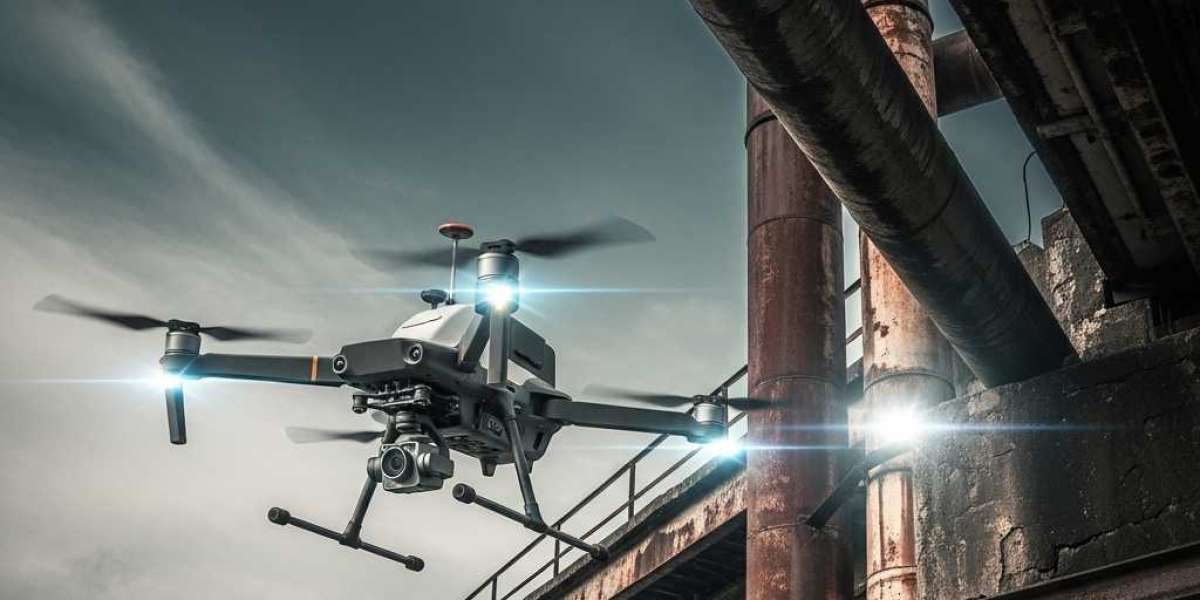In today’s fast-paced, technology-driven world, industries are constantly seeking faster, safer, and more cost-effective ways to monitor, assess, and maintain their assets. One innovation that has transformed the way inspections are carried out is Drone Inspection Solutions. From tall wind turbines to expansive pipelines, drones are now the go-to technology for inspecting hard-to-reach places that were once costly and dangerous to access.
This blog explores why Drone Inspection Solutions are revolutionizing inspections in challenging environments, the industries benefiting from them, and how they enhance safety, efficiency, and data accuracy.
The Challenge of Hard-to-Reach Inspections
Before drones entered the picture, inspecting elevated or remote areas often required:
Scaffolding and ladders for tall structures
Rope access teams for extreme heights
Helicopter flights for aerial surveying
Boat or vehicle transport for offshore or remote sites
These traditional methods came with a high price tag, significant safety risks, and lengthy downtime for operations. For example, inspecting a wind turbine could require a full day of preparation, specialized equipment, and a team of technicians — and even then, weather conditions could cause delays.
Enter Drone Inspection Solutions — agile, precise, and capable of capturing high-resolution data in minutes without risking human safety.
Why Drone Inspection Solutions are a Game-Changer
1. Unmatched Accessibility
Drones can reach places that are impossible or impractical for humans to access without heavy equipment. Whether it’s the underside of a bridge, the upper reaches of a skyscraper, or deep inside a confined industrial structure, drones can navigate challenging environments with ease.
2. Enhanced Safety
One of the biggest benefits of Drone Inspection Solutions is the reduction in safety risks. Workers no longer have to climb extreme heights, enter confined spaces, or work in hazardous conditions. Instead, they can operate drones from a safe distance, reducing the likelihood of accidents.
3. Cost Efficiency
Using drones for inspections significantly cuts costs by eliminating the need for scaffolding, cranes, or helicopter rentals. Businesses also save money by reducing downtime — drones can complete inspections in a fraction of the time required by traditional methods.
4. High-Quality Data
Modern drones are equipped with high-resolution cameras, thermal imaging sensors, and LiDAR systems that capture detailed visual and measurement data. This ensures that inspection results are precise, clear, and ready for analysis.
5. Real-Time Insights
Many Drone Inspection Solutions allow for live streaming, enabling inspectors and decision-makers to view findings in real time and make immediate decisions about maintenance or repairs.
Industries Benefiting from Drone Inspection Solutions
1. Energy Sector
Wind Turbines: Drones inspect blades, nacelles, and towers without halting operations.
Solar Farms: Thermal imaging detects faulty panels quickly.
Oil and Gas: Offshore rigs and pipelines are monitored for leaks, corrosion, and structural integrity.
2. Construction
Construction companies use drones to inspect tall cranes, scaffolding, and structural frameworks. They also monitor project progress from above, ensuring quality control.
3. Infrastructure and Transportation
Drones provide a close-up view of bridges, railway tracks, dams, and tunnels. They detect cracks, rust, or wear without disrupting public use.
4. Telecommunications
Cell towers, radio masts, and satellite dishes often require regular maintenance checks. Drones can complete these inspections quickly and without requiring technicians to climb.
5. Mining and Industrial Operations
From checking conveyor belts and silos to monitoring hazardous sites, drones reduce human exposure to dangerous conditions while delivering high-quality data.
Key Features of Modern Drone Inspection Solutions
When investing in Drone Inspection Solutions, businesses can expect:
Stabilized flight systems for precise navigation in windy or confined environments.
4K or higher resolution cameras for detailed image capture.
Thermal and infrared sensors to detect heat signatures, leaks, or insulation issues.
AI-powered analytics for automatic defect detection.
Cloud-based reporting systems for quick sharing of inspection results.
Step-by-Step: How a Drone Inspection Works
Pre-Inspection Planning
The inspection team outlines the area to be surveyed, determines flight paths, and ensures compliance with aviation regulations.Drone Deployment
The drone is launched, following pre-programmed routes or manual controls to capture required imagery and data.Data Capture
High-resolution photos, videos, and sensor readings are collected from multiple angles for thorough analysis.Data Analysis
The gathered data is processed using specialized software to identify potential issues such as cracks, leaks, or corrosion.Reporting
A detailed inspection report is generated, complete with visual evidence and recommendations for repairs or maintenance.
Advantages Over Traditional Inspection Methods
| Factor | Traditional Methods | Drone Inspection Solutions |
|---|---|---|
| Safety | Requires risky manual access | Operated from a safe distance |
| Time | Days to complete | Minutes to hours |
| Cost | High (equipment labor) | Lower (minimal equipment) |
| Data | Limited visual detail | High-resolution multi-sensor data |
| Accessibility | Restricted in many cases | Can reach almost any location |
Regulatory Considerations
While Drone Inspection Solutions offer many benefits, operators must follow aviation regulations set by authorities like the FAA (in the US) or DGCA (in India). This includes:
Obtaining necessary drone licenses
Adhering to flight height restrictions
Avoiding no-fly zones
Ensuring pilot training and certification
These regulations are in place to ensure safety for both operators and the public.
The Future of Drone Inspection Solutions
The future looks promising for Drone Inspection Solutions, with advancements in AI, autonomous flight, and data analytics making inspections even more efficient. Soon, we may see drones that:
Operate entirely autonomously with minimal human oversight
Use machine learning to detect defects instantly
Integrate with digital twins for predictive maintenance
Function in extreme weather and environmental conditions
Conclusion
For industries dealing with challenging inspection environments, Drone Inspection Solutions have become an indispensable tool. They provide safer, faster, and more cost-effective ways to assess hard-to-reach places while delivering precise and actionable data. As technology continues to evolve, drones will only become more capable, transforming how inspections are conducted across industries.
Whether it’s the top of a wind turbine, the underside of a bridge, or the remote corner of a mine, drones are proving that no place is truly out of reach anymore.



